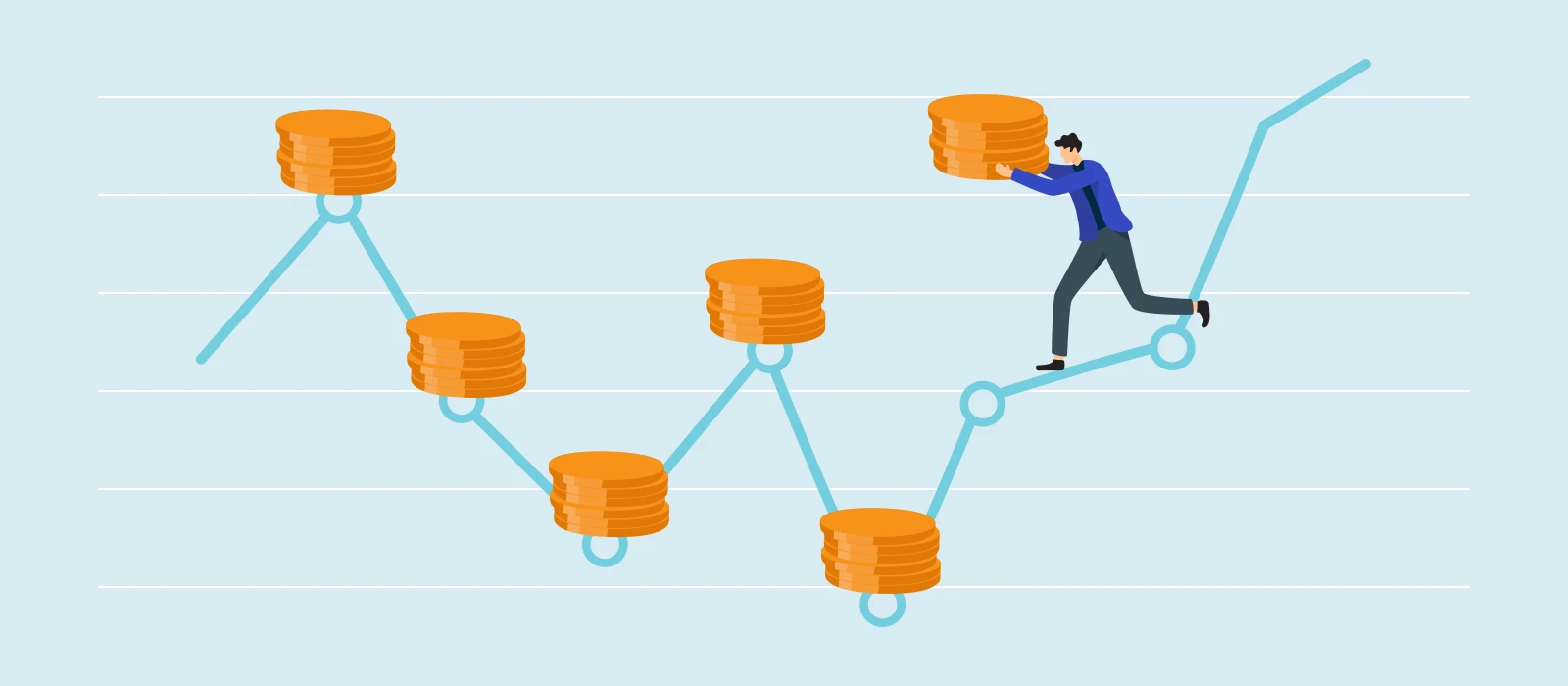What is a Savings Plan? The Role of Cost Averaging in a Savings Plan

What is a savings plan?
A saving plan is a financial strategy that follows a systematic approach to building up savings over a period of time. It is a simple but effective investment approach. In simple terms, a savings plan involves setting aside a fixed amount of money on a regular basis to invest in an asset such as stocks, bonds, mutual funds, or cryptocurrencies. The objective is to accumulate wealth over time by leveraging compound interest and the market’s long-term growth potential. The aim of a savings plan is to achieve a long- term financial goal.
What is cost average effect and how it is important?
The average cost effect, also known as cost-averaging or dollar-cost averaging, is an investment strategy in which a fixed amount of money is invested in an investment product at regular intervals.
By investing the same amount of money at regular intervals, regardless of market conditions, you can purchase more units of an asset when prices are low and fewer units when prices are high. This results in a lower overall average cost. By consistently investing the same amount, you ultimately pay less per unit over time than the market average. This can be particularly useful when investing in volatile assets like cryptocurrencies.
For example, let’s say you want to invest €100 per month in a cryptocurrency, and you set up a saving plan for it. Assume that the price of that cryptocurrency is currently €1 per unit.
1. Month
In the first month, you would purchase 100 units of the cryptocurrency with your €100 investment.
2. Month
In the second month, the price of the cryptocurrency increases to €2 per unit. However, since you are sticking to your savings plan, you still invest €100, which now buys you 50 units of the cryptocurrency.
3. Month
In the third month, the price drops to €1.50 per unit, allowing you to purchase 66.67 units with your €100 investment.
After three months, you would have accumulated 216.67 units of the cryptocurrency at an average cost of €1.17 per unit. This means that you’ve benefited from the cost-average effect and have the potential to make a profit when you sell it in the future.

What are the benefits of using a savings plan with cost averaging?
Investing in a savings plan based on cost averaging offers several advantages:
Disciplined saving
Regularly saving through a savings plan fosters a habit of saving, making it a routine part of your finances. This approach is particularly useful for beginners because it reduces the risks associated with trying to time the market. By investing a fixed amount of money on a regular basis, you’re taking a disciplined approach that doesn’t rely on short-term market movements.
Flexibility
Savings plans can be tailored to your specific needs, goals, and risk tolerance. You can choose the amount and frequency of your contributions (whether it is weekly, monthly, or quarterly), as well as the investment options that best suit your needs.
Less emotional
With a fixed and regular investment strategy in place, you are also less likely to invest large sums of money during market highs or lows, which could potentially lead to greater losses. It eliminates the emotional factor and brings in more financial stability through smoothing out the effects of market fluctuations on your investment portfolio.
Low-risk and diversification
Regular, smaller investments spread risk across various assets, making it a relatively low-risk strategy. Diversification is achieved by regularly investing in different stocks via a savings plan, as well as in funds or ETFs that contain a variety of stocks, guidance, and/or commodities –– this in turn reduces the specific risk of a single company or sector. Diversification can also be achieved through a savings plan with regular investments in different cryptocurrencies. Furthermore, it is possible to invest in ETFs and funds that cover different asset classes or regions, thus diversifying across different asset classes or geographic regions.
Sources
Hayes, A. (2023) “Dollar-Cost Averaging (DCA) Explained With Examples and Considerations,” Investopedia. Available at: https://www.investopedia.com/terms/d/dollarcostaveraging.asp, last accessed 12.09.2023.
Napoletano, E. (2023) “How To Invest with Dollar Cost Averaging,” Forbes Advisor, 21 March. Available at: https://www.forbes.com/advisor/investing/dollar-cost-averaging/, last accessed 12.09.2023.
Corporate Finance Institute (2023) “Dollar-Cost Averaging (DCA),” Corporate Finance Institute. Available at: https://corporatefinanceinstitute.com/resources/wealth-management/dollar-cost-averaging-dca/ , last accessed 12.09.2023.
Disclaimer
The content of this article is for informational purposes only and does not constitute financial, investment, and/or trading advice. We strongly recommend that you conduct the necessary research before making an investment, and/or trading decision. Please note that past performance does not guarantee future results.
Liability of the Börse Stuttgart Group and its subsidiaries for the article is excluded.